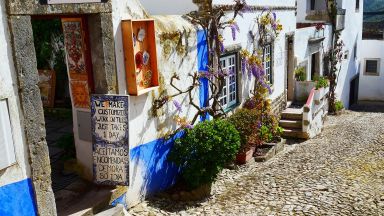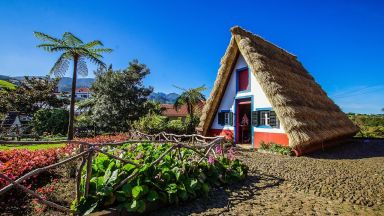Óbidos: The Complete Guide
Óbidos is a medieval town located in the Centro region of Portugal. The town is known for its well-preserved architecture, including its castle and walls, which date back to the 12th century.
The town’s history can be traced back to Roman times, but it was during the medieval period that Óbidos became an important center of trade and culture. It was also during this time that the town was gifted by King Dinis to his wife, Isabella of Aragon, as mentioned in the previous answer.
In addition to its historical significance, Óbidos is also known for its beauty. The town is situated on a hill and is surrounded by rolling countryside and vineyards. Visitors can walk along the town’s cobbled streets, which are lined with white houses adorned with colorful flowers. The town also has a number of churches and other historical buildings, including a 16th-century aqueduct.
Óbidos is also famous for its annual Chocolate Festival, which takes place every year in March or April. During the festival, visitors can sample a variety of chocolates, attend workshops and cooking demonstrations, and enjoy live music and other entertainment.
Overall, Óbidos is a charming and picturesque town that is well worth a visit for anyone interested in history, culture, and natural beauty.
Visiting Óbidos for the first time and wondering what are the top places to see in the city? In this complete guide, I share the best things to do in Óbidos on the first visit. Top help you plan your trip, I have also included an interactive map and practical tips for visiting!
This website uses affiliate links which earn a small commission at no additional cost to you.
6 Best places to See in Óbidos
This complete guide to Óbidos not only tells you about the very best sights and tourist attractions for first-time visitors to the city but also provide insights into a few of our personal favorite things to do.
This is a practical guide to visiting the best places to see in Óbidos and is filled with tips and info that should answer all your questions!
Porta da Vila (Óbidos)

Location: Porta da Vila, Rua Josefa de Óbidos, Óbidos, Portugal | Hours: 24 Hours | Price: Free | Distance: 0.10km
Visiting Porta da Vila (Óbidos)
Praça de Santa Maria (Óbidos)

Location: Praça de Santa Maria, Óbidos, Portugal | Distance: 0.20km
Visiting Praça de Santa Maria (Óbidos)
Museu Municipal de Óbidos

Location: Museu Municipal de Óbidos, Rua Direita, Óbidos, Portugal | Hours: 10am-1pm & 2-6pm Tue-Sun | Distance: 0.20km
Visiting Museu Municipal de Óbidos
Aqueduto de Óbidos

Location: Aqueduto de Óbidos, N114, Óbidos, Portugal | Distance: 0.30km
Visiting Aqueduto de Óbidos
Castelo de Óbidos

Location: Castelo de Óbidos, Rua Josefa de Óbidos, Óbidos, Portugal | Distance: 0.40km
Visiting Castelo de Óbidos
Santuário do Senhor Jesus da Pedra

Location: Santuário do Senhor Jesus da Pedra, Largo do Santuário, Óbidos, Portugal | Distance: 0.80km
Visiting Santuário do Senhor Jesus da Pedra


